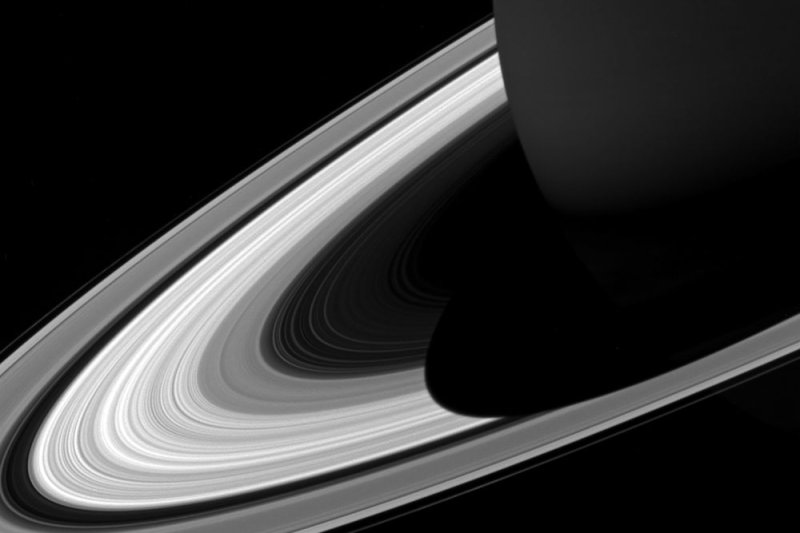The projection of Saturn's shadow on the rings grows shorter as Saturn's season advances toward northern summer, thanks to the planet's permanent tilt as it orbits the sun. NASA/UPI |
License Photo
Dec. 3 (UPI) -- Saturn's rings and satellites features the same kind of water found on planet Earth -- all except one satellite, that is. Saturn's moon Phoebe hosts water unlike any found in the solar system.
Every element exists in different isotopic forms, each with different numbers of neutrons. When an extra neutron is added to hydrogen, it becomes deuterium. When one of a water molecule's two hydrogen atoms becomes a deuterium atom, the molecule's mass increases.
Small isotopic changes can add up to big changes, altering the formation and evolution of a planet and its satellites.
Using a new technique for measuring the deuterium to hydrogen isotopic ratio on faraway planetary bodies, researchers were able to characterize the water found on and around Saturn and its satellites.
Some models suggests Saturn's water should feature elevated deuterium to hydrogen ratios, or D/H, but the newest measurements prove otherwise. The same can't be said for Phoebe.
"Phoebe's D/H ratio is the highest value yet measured in the solar system, implying an origin in the cold outer solar system far beyond Saturn," Roger N. Clark, senior scientists at the Planetary Science Institute, said in a news release.
Researchers also measured the carbon-13 to carbon-12 ratio on Phoebe and Iapetus, another of Saturn's moons. Iapetus' water is similar to Earth's water, and its carbon-13 to carbon-12 ratio is Earth-like, too. But Phoebe's carbon-13 to carbon-12 ratio is five times higher.
The findings, published in the journal Icarus, suggests Phoebe was formed in a distant, extremely cold region of the solar system, and migrated into orbit around Saturn after being perturbed and expelled from its birthplace.
Scientists can't say for sure how far out Phoebe came from. Currently, no D/H measurements for Pluto or Kuiper Belt objects exist. But as scientists improve their ability to measure faraway isotopic ratios, astronomers will be able to hone in on Phoebe's origins.















